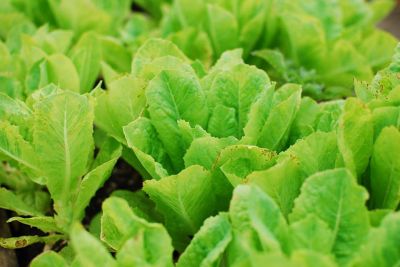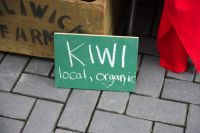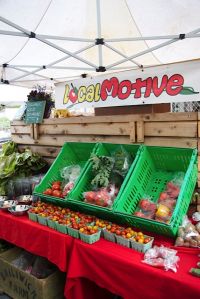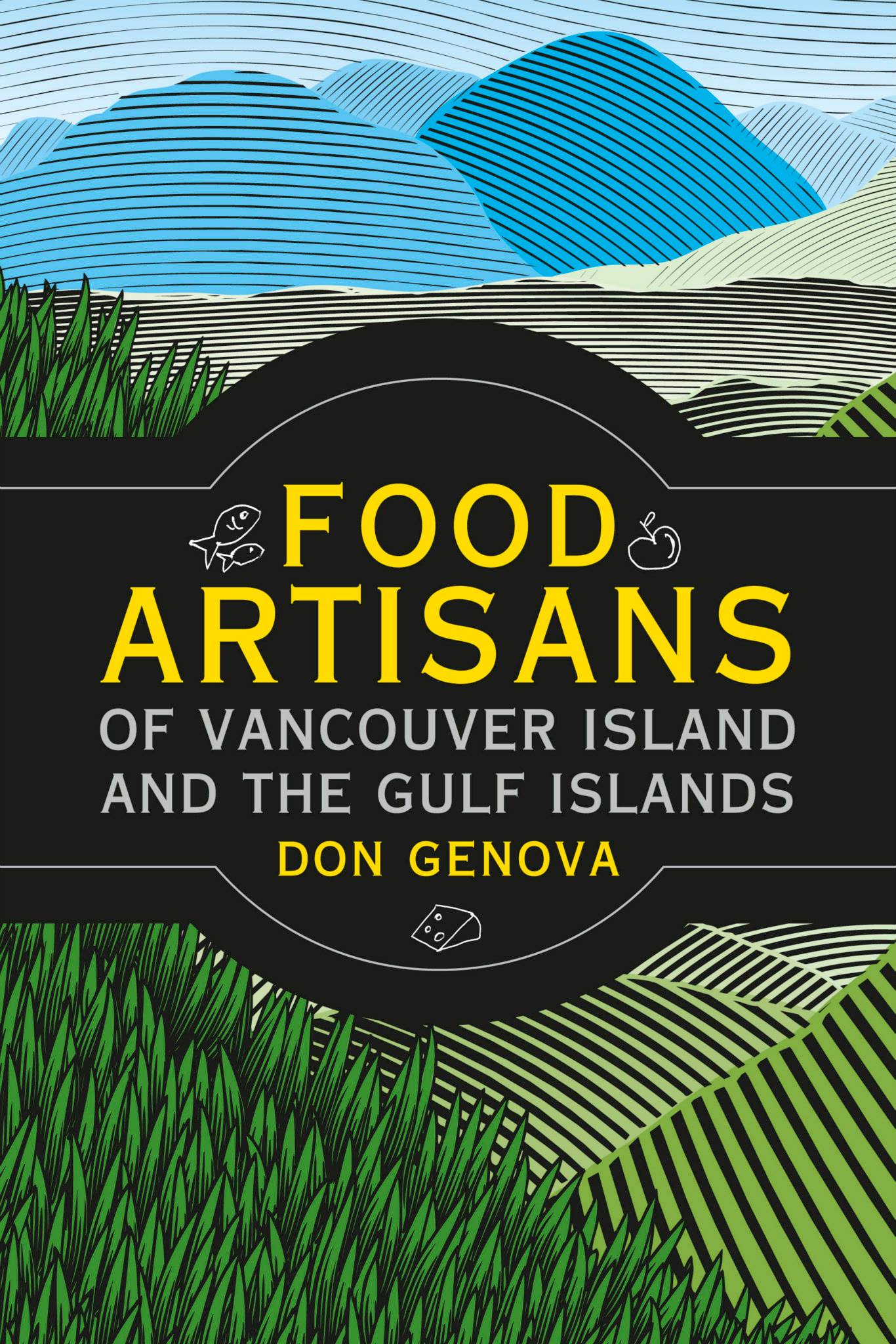 Local Lettuce
Local Lettuce
Local Food. It’s such a difficult concept to define. However, bureaucrats at the Canadian Food Inspection Agency have issued an ‘interim policy’ that for the purposes of labeling, ‘local’ is anywhere within a province, including up to 50 kilometres into a neighbouring province.
I immediately thought that it was a very arbitrary and easy was of defining local when there really is no easy way of defining a local food. I also thought back to several years ago when I first interviewed the authors of the 100-mile diet book, who are from Vancouver. When I asked them why 100 miles, they told me it simply sounded good. A nice round number, and more elegant than anything with the word ‘kilometre’ in it. But it really caught on and has practically become a definition of local in itself, which simply amplifies the very arbitrary nature of defining a region by a number that sounds good, or in the case of the CFIA, by a political boundary, plus 50 kilometres into the next provincial jurisdiction.
I decided to get some reaction to this policy by reaching out first on Facebook asking for reaction, and today I also visited the Downtown Victoria Farmers’ Market, where vendors there definitely have a stake in this definition. First to social media, where one of the strongest statements came from Sinclair Philip at Sooke Harbour House. Sinclair and his wife Frederique have long been champions of a strong connection between neighbourhood farmers and our tables. Here’s what Sinclair wrote to me:
“The word local doesn’t seem to mean anything in Canada anymore and this definition is clearly absurd. Under a definition such as this, no consideration for direct relationships with producers, farmers , artisan producers, sustainability or bio-region enter into account. In a province twice the size of France, transportation distances are enormous. This definition just reinforces the commoditization of our food system and will further help harm real local food systems. This is one more serious step backward in development of food culture and cuisine in Canada.”
Most of the rest of the comments I received were down on this ‘interim’ definition. A couple of chefs chimed in, Paul Stewart wrote:
“As a consumer, you need to ask where food comes from regardless of its ” local” label. This word has become overused more every year. Just like the term “organic” means something different all over the world.”
Heidi Fink wrote:
“That’s too broad a definition for the term ‘local’. Especially, as you say, for bigger provinces. That would mean that strawberries grown in Alberta cdould be labeled ‘local’ even when they are sold in Sooke! Or meat ranged in the Yukon! No way! I would prefer something measured in actual distance. For instance, within 200 km of the sale point.”
Some of my friends proposed labeling foods as being regional, breaking it down a little further, so Vancouver Island would become a region, perhaps the Fraser Valley. Karma Brophy, who leads culinary tours in this area and who has also studied the communication and marketing of local foods, also backs a ‘regional’ definition and writes:
“It’s not just labeling at stake here it’s marketing and communications and the potential for consumer confusion. Local already has different parameters to different people but we still all kind of know what to expect in the marketplace, where in general local seems to refer to regional foods.”
I visited the Downtown Victoria Farmers Market today, which for this summer has moved to the back carriageway of the Hudson Building every Wednesday. The farmers I spoke with didn’t like the new policy, they feel it will only confuse customers, one rancher says that even though his farm is in Saanich, he is now having to explain that the meat that he sells comes from animals born and raised here on Vancouver Island. One funny comment came from one of the customers I spoke with at the market, though, she said that in the winter, her ‘local’ is California! That statement brings up the idea that we are pretty lucky about how much we can grow here on South Vancouver Island and the Gulf Islands. Chef Janice Mansfield has a great take on that issue:
“…while I personally want to know where and how my food is grown and raised, the geography of Canada presents some challenges for every community if they are truly to eat local. Were lucky here on Vancouver Island to have lots of arable land, but what about options for those in Northern BC ? for many of those communities, eating regional makes much more sense, as eating local would be 1)very limited in terms of variety and 2) potentiallly unreasonable in terms of cost.
Also what about supporting agricultural production of products best suited for the land — e.g. Cariboo Chilcotin range beef is a beautiful thing, AND its harder to grow root vegetables in some of that soil! whereas Vancouver Island large scale beef production is not necessarily an efficient allocation of our arable land …
The upside of this regulation — it has people talking about where and how their food is grown!”
Janice is right: The message that has been promoted by local food activists has been getting through to more and more people. The pros of eating local include a fresher and more nutritious product in the case of fresh produce that hasn’t lost much of its quality or nutrition in transit, leaves a smaller carbon footprint (although that point is still debated) as well as the idea that buying from a local producer is a better way of supporting your local economy. I think the answer lies in an in-between area. Some of the discussion has to involve what you choose to eat and how it is produced. This is where the concept of the ‘foodshed’ comes in. A foodshed can be defined as ‘a local bioregion that grows food for a specific population’, but also depends on how the food is produced and how it gets to you.
 Local, Organic Kiwi!
Local, Organic Kiwi!
In my case I would mostly define my foodshed as the Cowichan Valley. Many of the vegetables, meats and dairy products I consume are grown and produced within the valley. But my foodshed expands, to include states like California and Florida, and countries like Mexico for some of my tropical fruits, or coffee-producing countries, because I choose to consume foods from those countries. So…I choose first to purchase foods in my immediate foodshed, but then I try to be careful about what I purchase from other supply lines…I want my coffee to be fair trade or direct trade, the same with my bananas, and so on. But you know what? Today I bought some very tasty kiwi fruit that were grown in Central Saanich.
I keep saying this again and again. Ask about the food you are going to buy. Sometimes how it is produced and delivered to you is more important than exactly where it has been produced.



